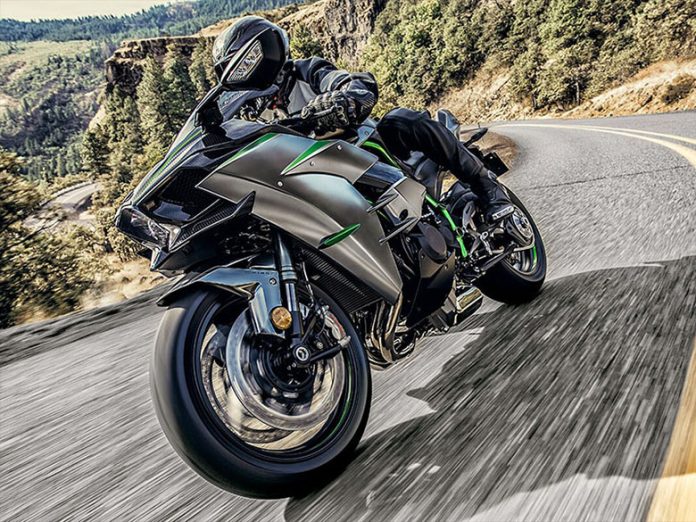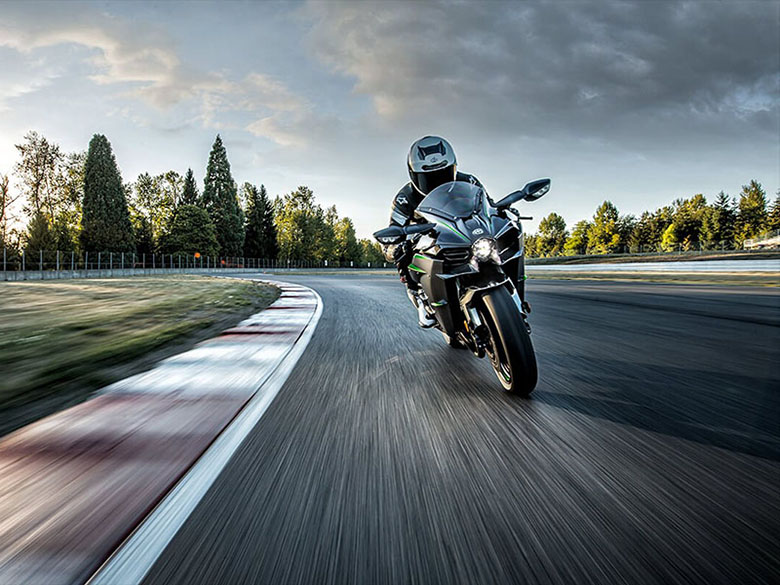An all-new 998cc inline four-cylinder engine, proprietary supercharger, lightweight trail frame, compact superbike dimensions, aerodynamic bodywork, and a solid single-sided swing arm are all featured in this bike. Brembo Stylema brake calipers, brand new Kawasaki Quick Shifter (KQS), Kawasaki Traction Control (KTRC-9 modes), and the new Kawasaki’s exceptionally durable self-healing paint are standard versions. The cockpit features a TFT (thin film transistor) color device display with four custom display modes, as well as Bluetooth smartphone connectivity (with RIDEOLOGY The APP ). The 2021 Kawasaki Ninja H2 Carbon Sports Motorcycle has an MSRP of $ 33,000 and is available in the Mirror Coated Matte Spark Black / Candy Flat Blazed Green, including its clear coated raw carbon. Fairing on display.
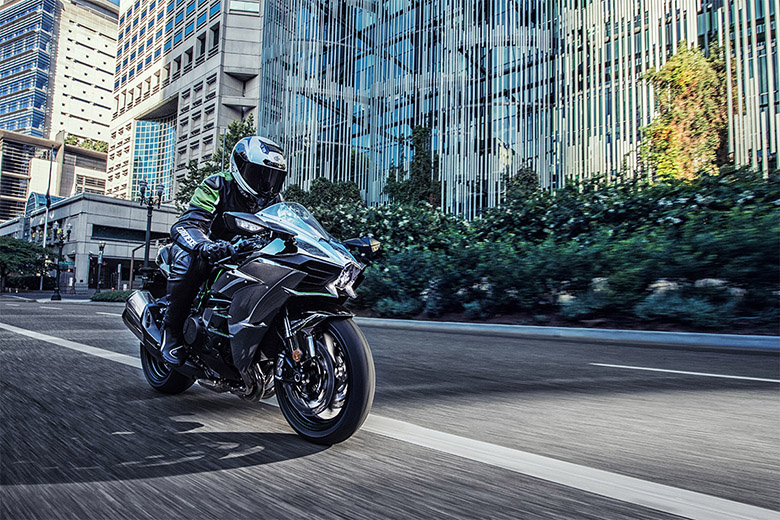
2021 Kawasaki Ninja H2 Carbon Sports Motorcycle – Features and Specs
Engine
For intense speeds, the Kawasaki Ninja H2 engine must be compact and provide a lot of horsepowers. It was decided that the supercharger was needed, but the remaining supercharger alone would not suffice. The collaboration between Kawasaki’s technical divisions resulted in a highly efficient supercharger that did not require an intercooler to cool the air fed to the engine.
The engine is intended to withstand about 1.5-2 times the force of an engine of the same capacity. For high-speed engine response, the crankshaft inertial moment was kept as low as possible and teamed up with the lightweight flywheel. The rotating mass is also lighter, which contributes to the faster handling properties. The new dual secondary balancers keep engine vibration to a minimum.
Connecting rods have ample head and bolt diameters for strength and durability in high-output configurations, and they balance strength and weight.
For high temperatures generated by the engine, cast pistons perform better than forged pistons. The unique casting method creates hollow sections to achieve greater thickness while losing weight. A V-tube on the second piston ring decreases blow bye and oil consumption by stopping the upper ring from fluttering. The piston is cooled with the help of two oil jets per cylinder. The bottom of the new piston dome is sprayed with the help of a single nozzle, while the exhaust side under the dome is sprayed with the other.
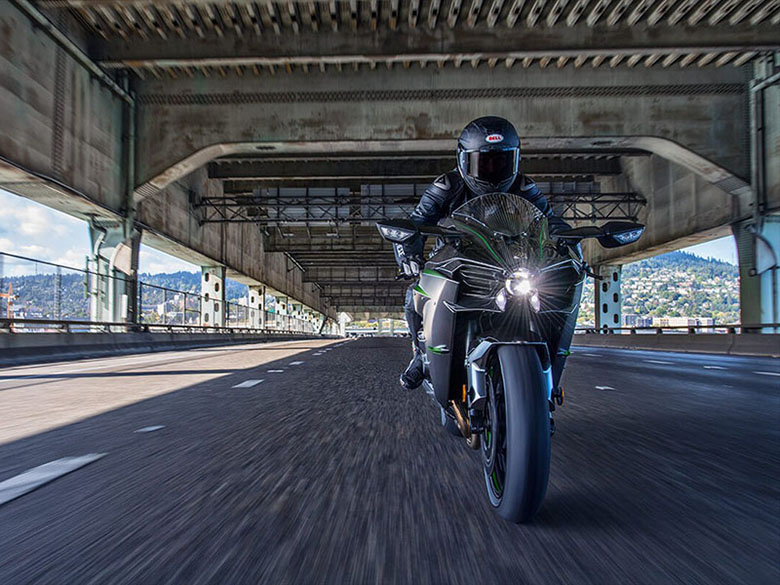
Supercharger
The centrifugal-type supercharger, designed and manufactured by Kawasaki, has an overall pumping capacity of more than 200 liters per second, with intake air reaching a greater speed of 328 feet per second at a more significant atmospheric pressure of 2.4 times.
The crankshaft drives planetary gear, thanks to the knowledge of the Kawasaki gas turbine and aerospace, rotates 69 mm of the impeller at approximately 130,000 rpm. Because the supercharger is so efficient, the compressed intake air is heated a bit, so no intercooler is needed. To help deliver higher productivity, the Ram Air Intake Duct Supercharger provides as much fresh air as possible in a straight line.
Digital Fuel Injection
The 50 mm throttle valves are highly accurate, resulting in smooth engine response. This system further improves the S-KTRC input while adjusting the new Kawasaki launch control and engine brake control. The high-pressure fuel pump is used to increase the power of the supercharger.
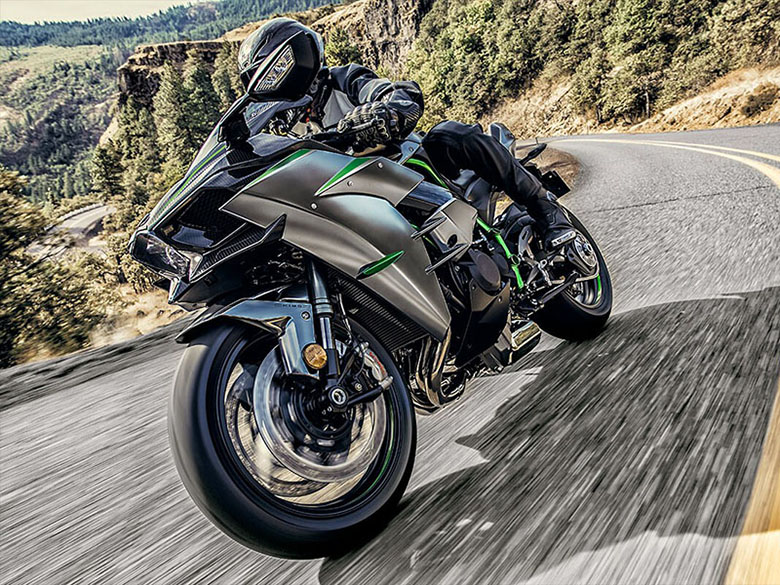
Kawasaki Quick Shifter (KQS)
When the throttle is completely off, the Kawasaki Quick Shift (KQS) system has a down-shift function that enables clutch-less down-shift. Quick shifter with a contactless potentiometer for short upshift and smooth acceleration.
Kawasaki Next Level Electronics for the Track
Because of the programming that gives the ECU a precise, real-time picture of what the chassis is doing with nominal software, Kawasaki’s state-of-the-art electronics have always performed well on track. Thanks to the latest iteration of dynamic modeling software owned by Bosch IMU and Kawasaki, Ninja H2’s electronic management technology has shifted from setting-type and reaction-type to feedback-type to the next level. It increases capacity and allows riders to make the most of the Kawasaki Ninja H2 on the track.
Chassis
The design of the chassis should be strong enough to handle high engine power and take external disturbances at high speeds on the course. A short wheelbase was also required to maintain fast handling and performance. Ultimately, the chassis had to help dissipate the heat generated by such a high-output engine.
The new trail frame is made up of high-tensile steel, in which the thickness, diameter, and bend of each piece of pipe are precisely adjusted to achieve the desired stiffness. High-speed track riding is possible because of an ideal stiffness balance that can absorb external shocks while maintaining stability.
Suspension
For a smoother ride and ultimate steering and handling, the Uni-Trak linkage rear suspension system offers progressive action for the rear shock so that small collisions are gently moist and large crashes are very wet.
The swing arm on the H2 is one-sided. It is made up of forged and pressed aluminum pieces and is tremendously strong and lightweight. It provides extra room for an excellent exhaust form on the right side of the motorcycle.
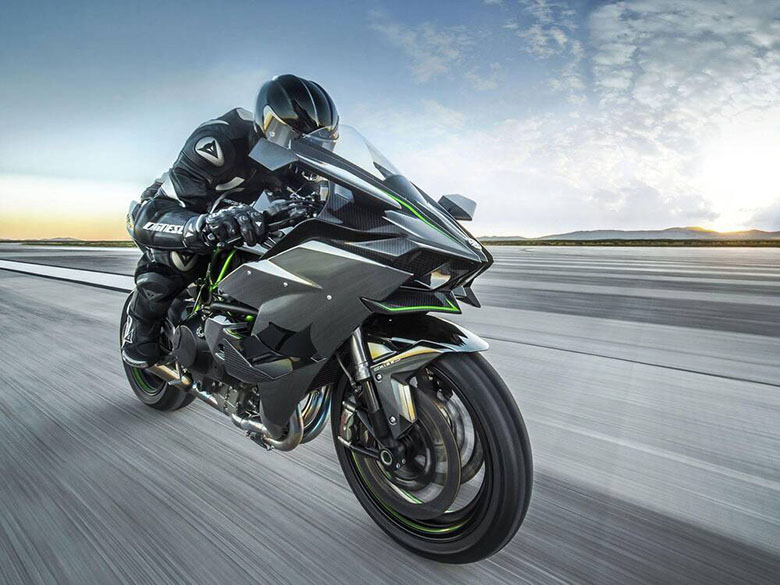
Brakes
The front brake caliper is in radio position with four pistons. Brembo Stylama monoblock calipers with four opposite 30mm piston clip Massio 330mm Brembo discs are used on the front brakes for superior braking force. The outer edges of the discs have a groove in the middle to help dissipate heat. The new Brembo’s radial-pump master cylinder and reservoir have been enhanced to create a significant front braking force with minimal lever movement. Two 32 mm piston Brembo calipers clamp the 250 mm disc in the rear.
2021 Kawasaki Ninja H2 Carbon Sports Motorcycle – Price
The new 2021 Kawasaki Ninja H2 Carbon Sports Motorcycle is available for $33,000 only.
2021 Kawasaki Ninja H2 Carbon Sports Motorcycle – Technical Specifications
Engine
| Type | 4-Stroke, 4-Cylinder, DOHC, 4 Valve Cylinder Head, Liquid-Cooled, Supercharged |
| Displacement | 998cc |
| Bore & Stroke | 76mm x 55mm |
| Maximum Torque | TBA |
| Compression Ratio | TBA |
| Fuel System | DFI with Dual Injectors |
| Ignition | TCBI with Digital Advance |
| Transmission | 6-Speed, Dog-Ring |
| Final Drive | Sealed Chain |
Dimension
| Rake/Trail | 24.5° / 4.1 in. |
| Front Wheel Travel | 4.7 in. |
| Rear Wheel Travel | 5.3 in. |
| Front Tire Size | 120/70-17 |
| Rear Tire Size | 200/55-17 |
| Wheelbase | 57.1 in. |
| Fuel Tank Capacity | 4.5 gal. |
| Seat Height | 32.7 in. |
| Curb Weight | 524.8 lbs. |
Chassis
| Front Suspension | 43 mm of Inverted AOS-II Fork including Adjustable Compression & Rebound Damping, Spring Preload Adjustability, and Top-Out Springs |
| Rear Suspension | New Uni-Trak, Ohlins TTX36 Shock featuring 22-way Compression & Rebound Damping and Hand-Turn Preload Adjustability |
| Front Brake Type | Dual Semi-Floating 330mm Discs featuring Radial-Mount, Opposed 4-Piston Calipers |
| Rear Brake Type | 250mm Disc with Opposed 2 Piston Caliper |
Others
| Warranty | 12 months |
| Kawasaki Protection Plus™ | 12, 24, 36, or 48 months |

